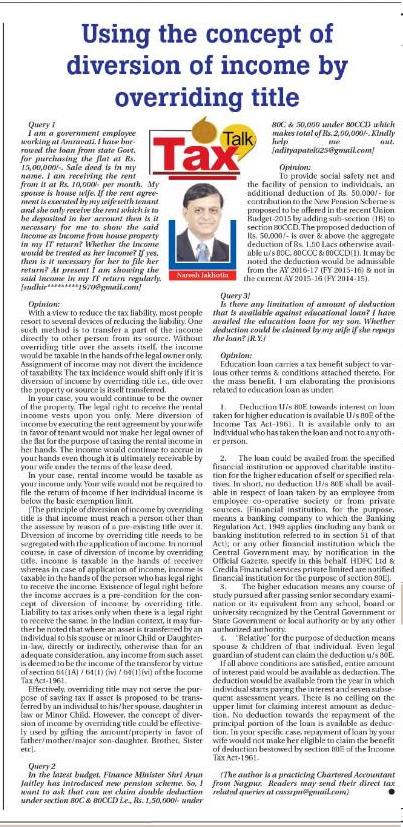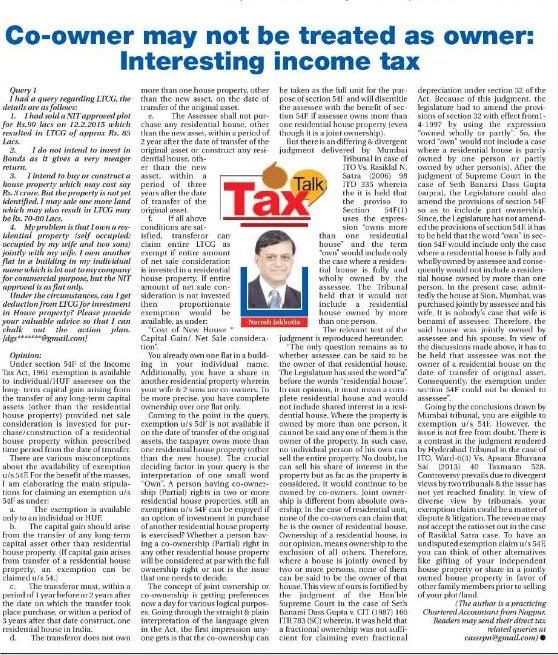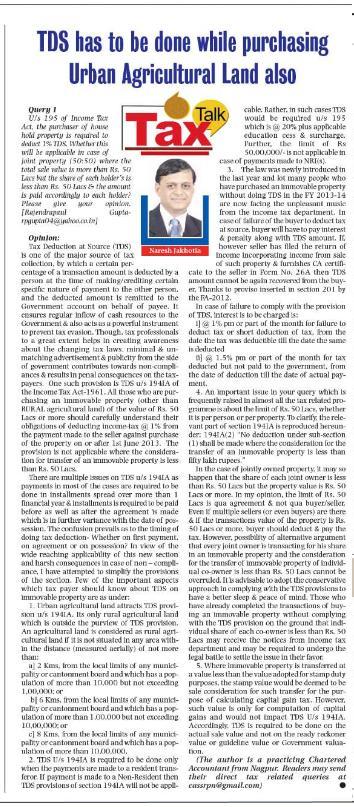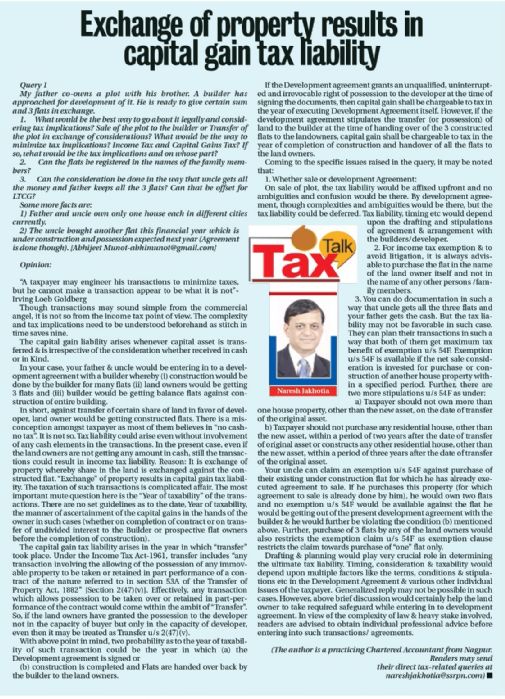Article Details
| Whether two adjacent flats can be regarded as “One †house property |
|
TAX TALK-24.10.2016-THE HITAVADA TAX TALK CA. NARESH JAKHOTIA Chartered AccountantWhether two adjacent flats can be regarded as “One ” house property 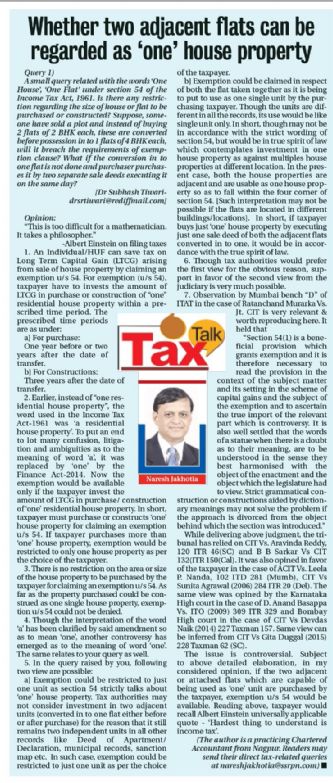 Query 1] A small query related with the words "One House", "One Flat ". Is there any restriction regarding the size of house or flat to be purchased or constructed? Suppose, someone have sold a plot & instead of buying 2 flats of 2 BHK each, these are converted before possession in to 1 flats of 4 BHK each, will it breach the requirements of exemption clause? What if the conversion in to one flat is not done & purchaser purchases it by two separate sale deeds executing it on the same day? [Dr Subhash Tiwari-drsrtiwari@rediffmail.com] Opinion: “This is too difficult for a mathematician. It takes a philosopher.” —Albert Einstein on filing taxes 1. An Individual/HUF can save tax on Long Term Capital Gain (LTCG) arising from sale of house property by claiming an exemption u/s 54. For exemption (u/s 54), taxpayer have to invests the amount of LTCG in purchase or construction of “one” residential house property within a prescribed time period. The prescribed time periods are as under: a] For purchase: One year before or two years after the date of transfer. b] For Constructions: Three years after the date of transfer. 2. Earlier, instead of “one residential house property”, the word used in the Income Tax Act-1961 was “a residential house property”. To put an end to lot many confusion, litigation & ambiguities as to the meaning of word “a”, it was replaced by “one” by the Finance Act-2014. Now the exemption would be available only if the taxpayer invest the amount of LTCG in purchase/ construction of “one” residential house property. In short, taxpayer must purchase or constructs “one” house property for claiming an exemption u/s 54. If taxpayer purchases more than “one” house property, exemption would be restricted to only one house property as per the choice of the taxpayer. 3. There is no restriction on the area or size of the house property to be purchased by the taxpayer for claiming an exemption u/s 54. As far as the property purchased could be construed as one single house property, exemption u/s 54 could not be denied. 4. Though the interpretation of the word “a” has been clarified by said amendment so as to mean “one”, another controversy has emerged as to the meaning of word “one”. The same relates to your query as well.
The issue is controversial. Subject to above detailed elaboration, in my considered opinion, if the two adjacent or attached flats which are capable of being used as “one” unit are purchased by the taxpayer, exemption u/s 54 would be available. Reading above, taxpayer would recall Albert Einstein universally applicable quote – “Hardest thing to understand is income tax”. [The author is a practicing Chartered Accountant from Nagpur. Readers may send their direct tax related queries at SSRPN & Co 10, Laxmi Vyankatesh Apartment C.A. Road, Telephone Exch. Square Nagpur-440008 or email it at nareshjakhotia@ssrpn.com] 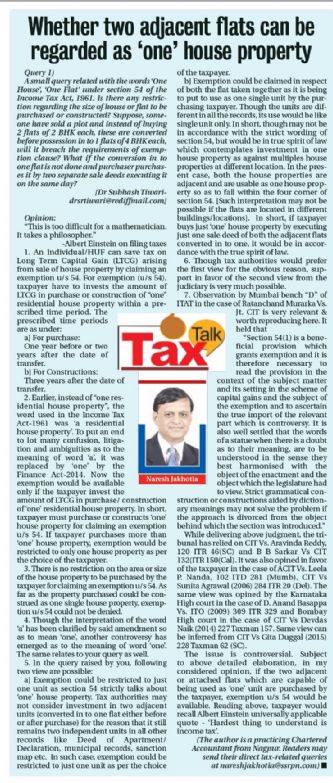
|
 |




.png)
